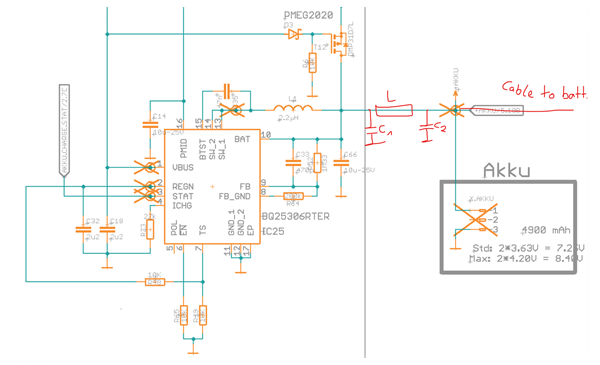Hello!
We developed a handheld device with the BQ25306 charger IC. The battery is in the housing and connected via a 30cm cable to our PCB. The device also has an LF radio frequency receiver (125kHz). If the battery is charging, especially if the battery is almost full, we see big noise at our LF receiver. This seems to be an EMI problem because if I move the PCB (including the antenna) away from the cable and battery pack everything works fine. The circuit and layout around the BQ25306 is pretty close to your reference design. I tried different things and the best way up to now to reduce this problem was to add an inductivity into line going to battery, see picture:

So my question is, is there a problem to add an inductivity L here? How big should this be, I tried up to 10µH? Does the charger work correctly then (up to now it seems so...)? Should I add more capacities C1 or C2? I also already tried a snubber circuit with an R and a C at SW output, with no or only little effect. Do you have other recommendations?
Thanks a lot for your help!
Best regards, Christian

